Cornwall is a beautiful peninsula known for its high cliff faces and rugged coastline. Because of the area’s treacherous waters, lighthouses have been crucial for navigation and safety for centuries.
Lighthouses are remarkable not only for their beauty but also for their pivotal role in preventing maritime disasters. Steeped in history, the imposing lighthouses of Cornwall are more accessible than you think!
If you’re interested in catching a glimpse into the past, here’s a guide that will walk you through the lighthouses in Cornwall.
We’ll explore:
- Facts about the lighthouses in Cornwall
- The history surrounding these structures
- Things to do and places to stay while in the area.
The lighthouses in this article can be viewed from either the shore or by boat. Before heading out, remember to bring your binoculars, camera, and a sense of wonder!
Lighthouses in Cornwall
Because of the lengthy stretch of the Cornish coast, you might be wondering — just how many lighthouses are there in Cornwall?
The county has had its fair share of these magnificent structures, but only nine lighthouses still stand today, scattered all throughout the region.
The first recorded lighthouse in Cornwall was the Eddystone Lighthouse which was built in 1696 and first lit in 1698.
As time passed, more lighthouses were constructed to help with navigation and to ensure the safety of ships and crews.
In their heyday, lighthouses were oil-powered. Nowadays, they are run remotely—and some are even powered by solar energy!
Godrevy Lighthouse
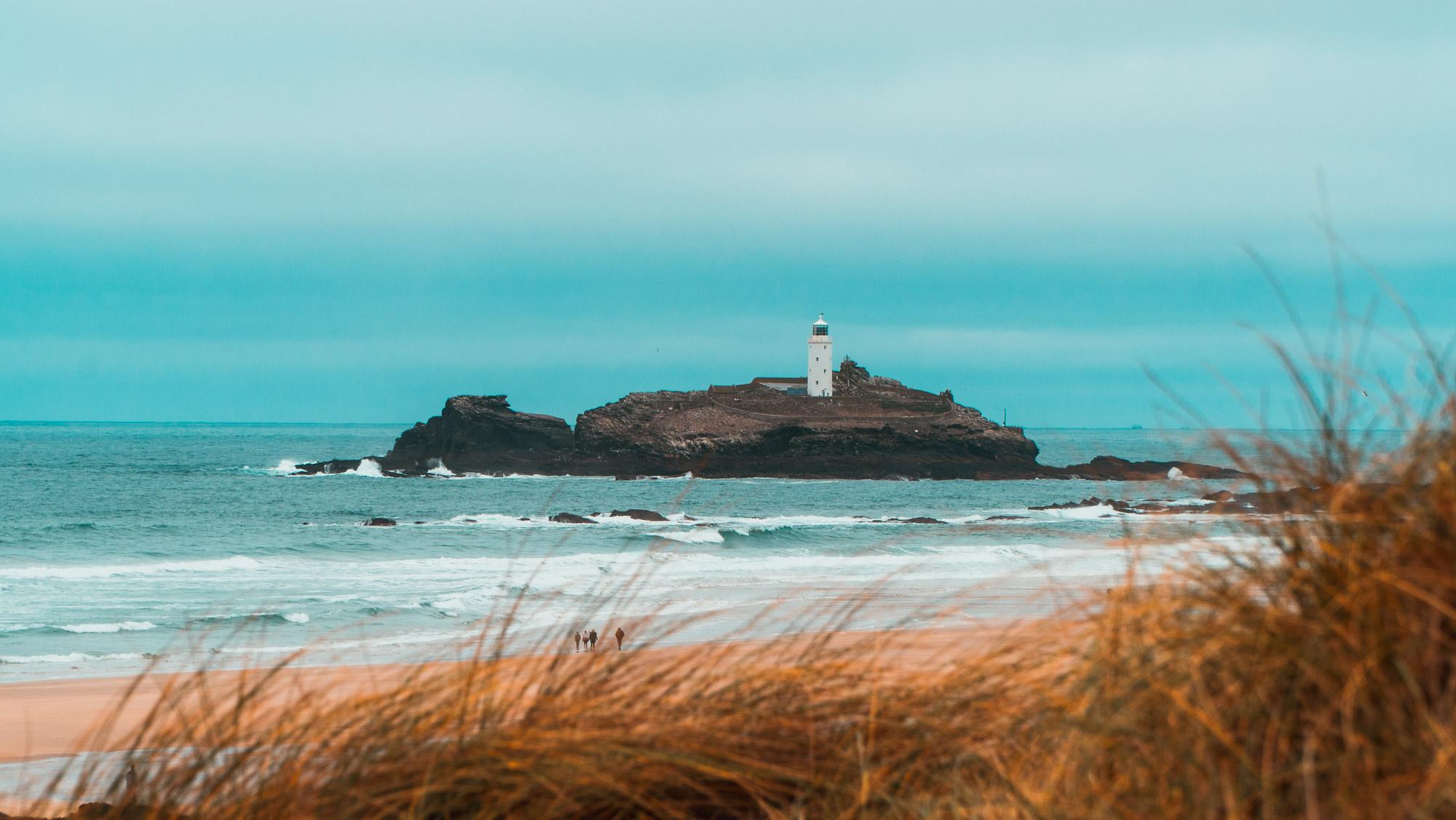
The Godrevy Island lighthouse was built in 1859 and is located just off the coast of Godrevy beach.
Literature enthusiasts will probably know that Godrevy Lighthouse inspired Virginia Woolf’s novel, “To the Lighthouse”, although the book changed the lighthouse’s location.
Godrevy Lighthouse has an octagonal tower made from rubble and mortar and stands an impressive 85 feet (26 m) tall. The lighthouse has been automated since the thirties and solar-powered since 1995.
The series of shipwrecks that occurred in the nearby Stones Reef in the nineteenth century inspired the construction of the lighthouse.
This area was notorious for shipwrecks over the centuries, and one of the most famous incidents involved a ship carrying King Charles I’s possessions which were lost to the sea.
Nowadays, Godrevy Lighthouse is viewable via local boat tours or you can admire the gorgeous seaside views from a nearby café.
Surfers will definitely enjoy the view of Godrevy Lighthouse while they wait for the next swell of powerful waves here. If you’re a birdwatcher or just fond of watching seals, you’ll be right in your element as well on this windswept, grassy island!
Eddystone Lighthouse

Eddystone Lighthouse stands on a lonely rock in the Eddystone Reef 10 miles off the southeast coast of Cornwall’s Rame Head. Measured from Plymouth, the location is about 13 miles southwest of the city.
The Eddystone Lighthouse enjoys a long history dating back to 1698 when Henry Winstanley built the first two lighthouses in Cornwall after he lost a ship in the area. However, both lighthouses were swept away.
After rebuilding the lighthouses, Winstanley took up residence on the island. Unfortunately, he lost his life not long after.
Much later, the third lighthouse built on the island was destroyed in a fire. In a strange twist of fate, its keeper survived the fire but died later after accidentally ingesting molten lead from the roof during the inferno.
The fourth lighthouse, designed by John Smeaton, was made from stone and was famous for its oak tree shape. While the tower was durable, its base nevertheless cracked.
So, in 1882, a new lighthouse was built with a similar design and a reinforced base – and it has survived until the present day.
With a towering height of 161 feet (49 m) and complete with a helipad on top, Eddystone Lighthouse is visible from afar. You can view this lighthouse while cruising on a small boat or all the way from the shore at Plymouth Hoe on a clear day.
There’s also an excellent fishing and diving site nearby for a picturesque underwater experience.
If you’re a history buff, you might also want to visit Plymouth to see Smeaton’s red-and-white-striped lighthouse with its beautiful dovetailed blocks.
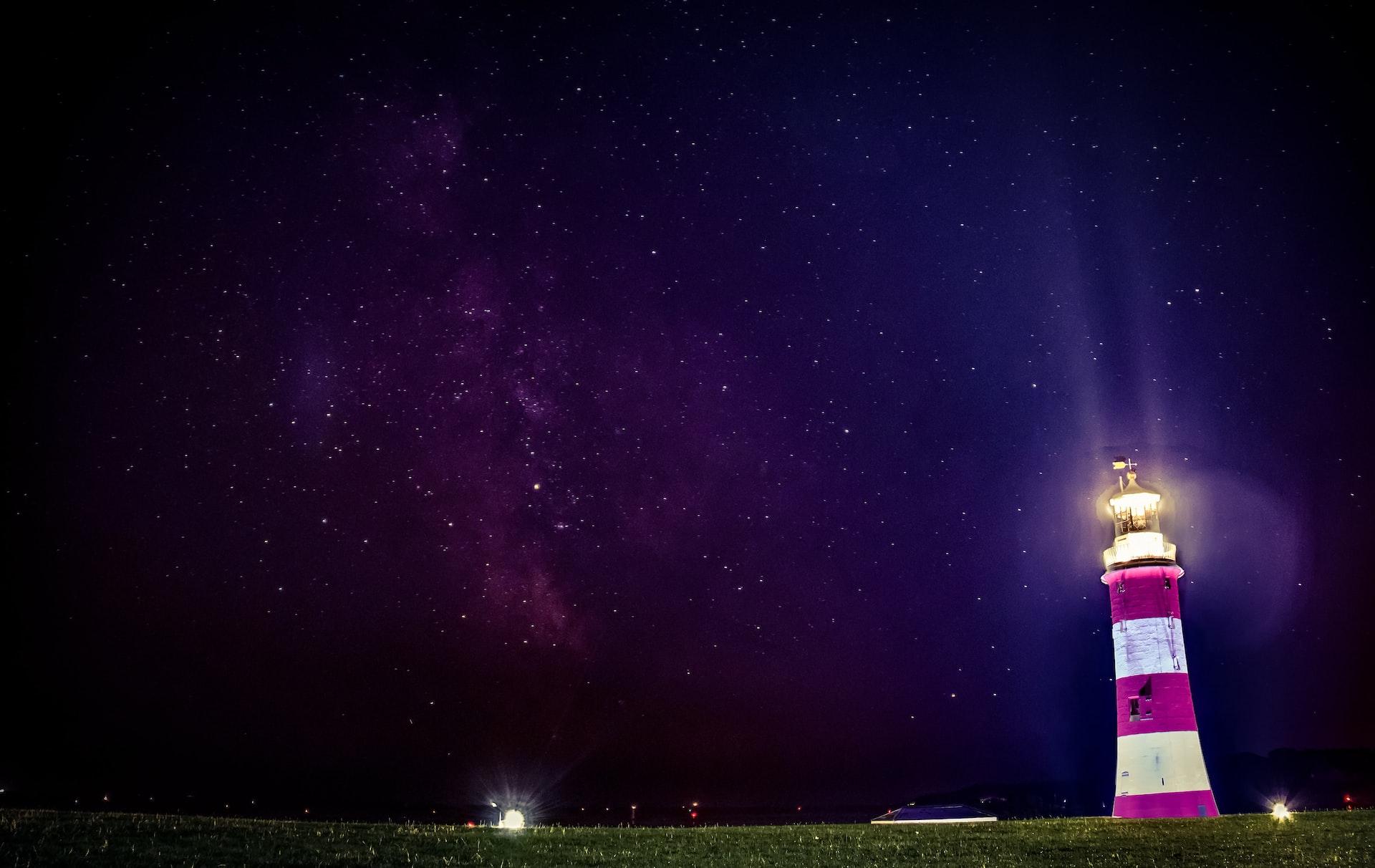
Lizard Lighthouse
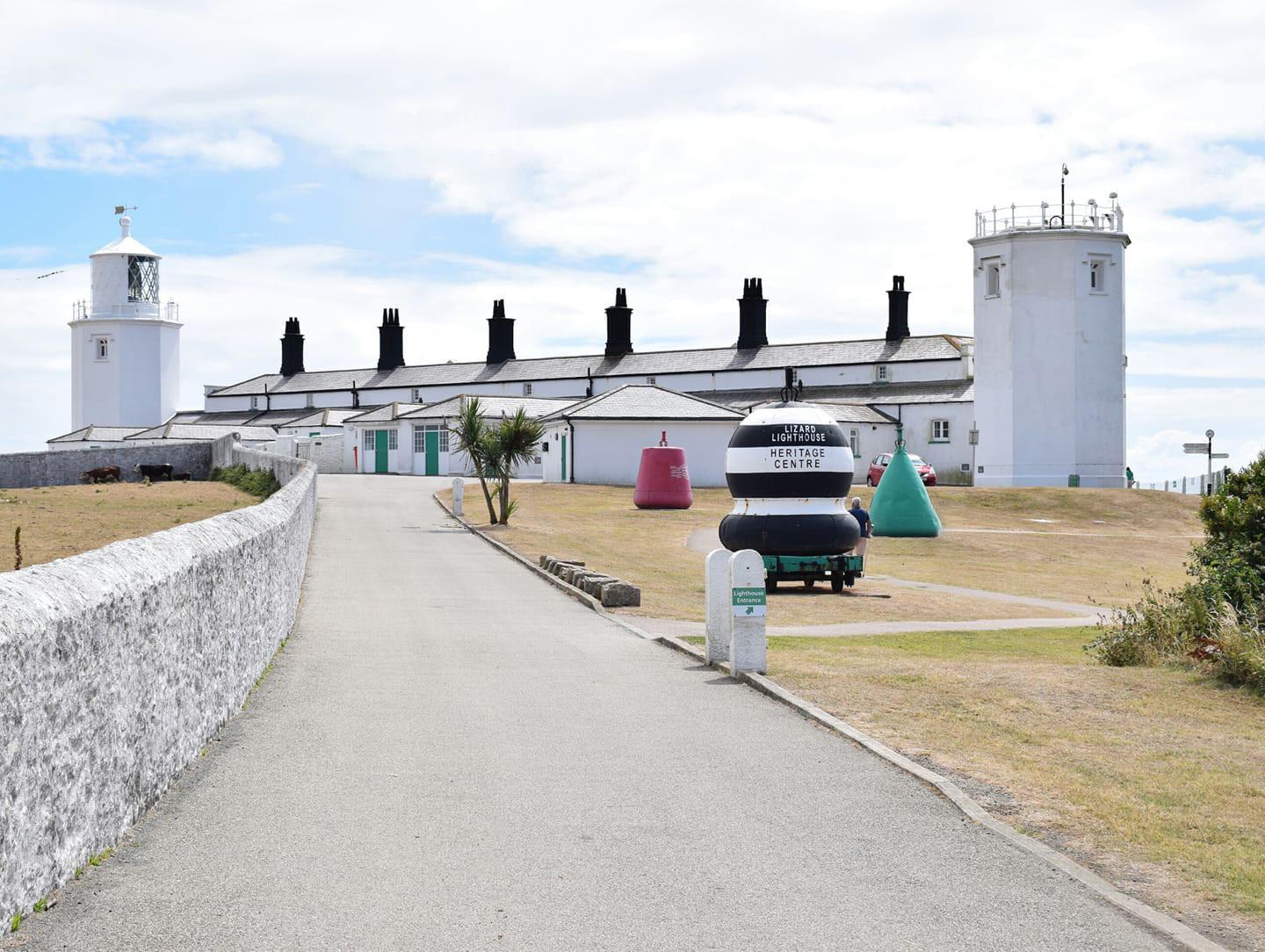
The Lizard Lighthouse can be found on the Lizard Peninsula, the southernmost point of Mainland Britain. Constructed in 1752, the landmark is one of the oldest working lighthouses in the country.
This lighthouse has a turbulent history.
Centuries ago, the locals opposed its construction because it would have made it more difficult for them to loot from shipwrecks.
The first Lizard Lighthouse built in 1619 was torn down a few years after construction because the ships using the service refused to pay for its upkeep. The site then went without a lighthouse until 1751.
Finally, another lighthouse was erected on the site in 1752 in the form of twin towers. The current structure, which stands at 62 feet (19 m), was automated in 1998.
The Lizard Lighthouse offers a one-of-a-kind visitor experience. You can climb the tower and send a message in Morse code from the original engine room (built in 1752) or sound the fog horn. There are also cafés and ample parking facilities in the area.
This is one of the few lighthouse complexes where you can even book one of the keepers’ cottages for an overnight stay!
Beyond the authentic lighthouse experience, there are coastal walking trails with elevated views of the expansive sea stretching all the way to the horizon.
St Anthony’s Head Lighthouse
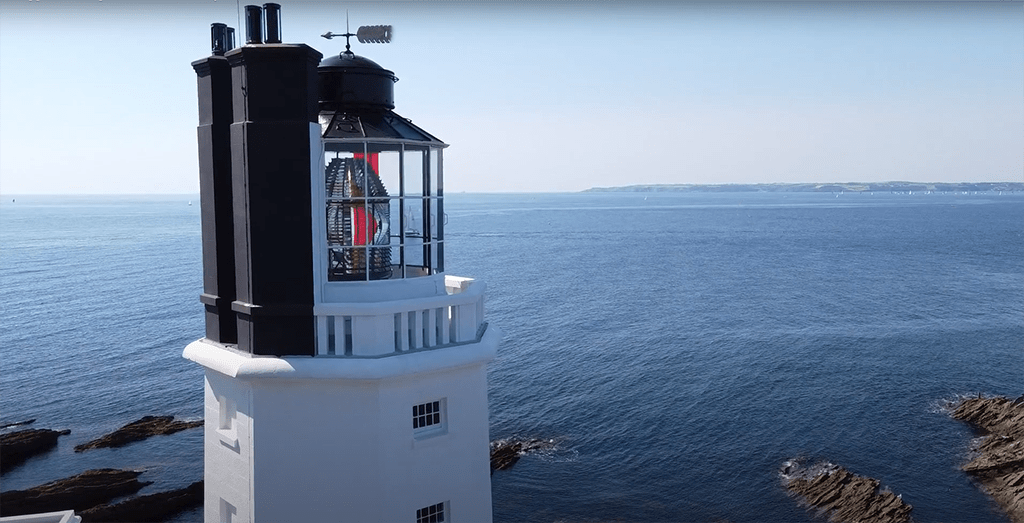
Located near Falmouth in Cornwall, St Anthony’s Lighthouse has been guiding ships safely into Portreath Harbour since 1835.
Historically, a red flag was hung from a tree to show wind direction at this site. However, this was taken down in 1779 to prevent invaders from coming into port.
Standing at 62 feet (19 m), its octagonal tower with a balcony and a built-in lantern is unmistakable. The lighthouse, made entirely out of granite, is a sight to behold.
St Anthony’s Lighthouse is a well-known lighthouse because it was featured in the opening credits of the hit TV series Fraggle Rock. For this reason, most Brits would recognise St Anthony’s Head Lighthouse (although they might not know its name).
If you’re going for a visit, you can book an overnight stay in the former keeper’s two-bedroom residence in Sally Port Cottage. The cottage boasts fantastic views of the sea and the rocky shore from its observation window.
Pendeen Watch Lighthouse
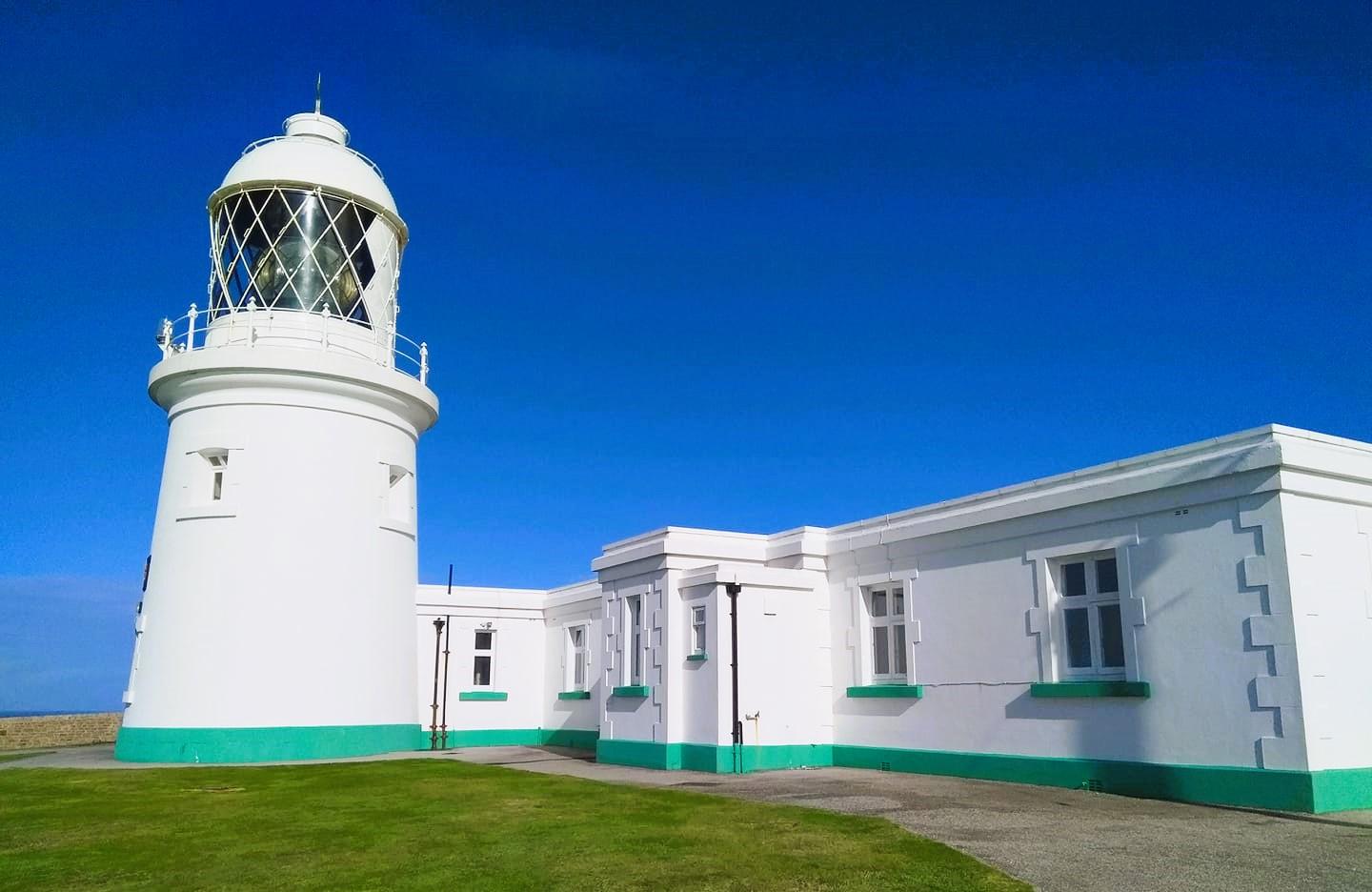
The Pendeen Watch Lighthouse was built in 1900 and is one of the most important lighthouses in the region.
Situated on a rugged headland, the lighthouse is known for its distinctive white tower and black lantern. The lighthouse features an idyllic cylindrical tower with a balcony that stands 56 feet (17 m) tall.
Historically, the Pendeen Watch Lighthouse was known for playing a key role in ensuring the safety of ships and was one of the most important lighthouses in the UK.
There are plenty of interesting activities available to visitors in Pendeen Village.
For one, you can tour the lighthouse and see its original machinery from before it was automated. Imagine being able to see through the same lens from when it was first built!
While in the area, you can also rent one of the two former keepers’ cottages. Here, you can put yourself in the shoes of a lighthouse keeper, walk around the rocky coastline, and enjoy the views of the sea, lighthouse, and wildlife.
Longships Lighthouse
The Longships Lighthouse is on another lonely rock on Carn Bras islet, 1.25 miles (2 km) west of Land’s End, off the far southwest point of the mainland.
This cylindrical tower stands 115 feet (35 m) tall and is made from granite. Nowadays, the lighthouse runs on solar panels from Cornwall Solar Company and sports a helipad on top.
Originally built on the highest part of the largest island in Longships back in 1795, the lighthouse was considered too low for its signals to be read clearly from afar. Hence, the structure was rebuilt in 1875 and became the modern Longships Lighthouse.
Due to its dangerous location, the Longships Lighthouse can be viewed by boat only. There are many charter trips available that combine a day’s fishing with a visit past this lighthouse, making for a truly scenic experience.
The Longships Lighthouse is remarkable for its role in keeping Britain safe because of its extreme location. Because it’s a well-lit lighthouse, this part of the British sea is also considered one of the best illuminated.
Tater Du Lighthouse

Built in 1965 along the coast of Cornwall, the Tater Du is the most recent and modern lighthouse built in the county.
This 49-foot (15 m) lighthouse was a response to public outcry over the loss of 11 lives on a Spanish vessel that ran aground on the treacherous Runnelstone Rocks in 1963.
The lighthouse consists of a concrete block, a cylindrical tower with a balcony, and a built-in lantern. It was designed to accommodate a variety of sound signals and has never been manned.
Seemingly an homage to the multiple shipwrecks that occurred in the area over the centuries, the Tater Du is built near the site of the Garonne shipwreck which was lost in 1868.
If you’re interested to visit, there’s a scenic, mile-long coastal walk to reach this remote lighthouse. In the summer, this area blossoms with wildflowers and is abundant with visiting birds.
Wolf Rock Lighthouse

Standing amid the ferocious Atlantic Ocean, the Wolf Rock Lighthouse is located 8 miles (12.9 km) off the coast of Cornwall.
Since it was built in 1869, this structure is considered to be one of the most important lighthouses in the region. The first beacon here was a simple pole, but it was swept away in the late eighteenth century.
The current tower on the site is the fifth iteration, and it was built into a rocky outcrop south of Land’s End in the 1860s.
Because the treacherous seas prevented access to the site most of the time, the construction took eight years and necessitated the use of special barrages.
The waves wash right over the rocks surrounding the 135-foot (41 m) tall lighthouse. For this reason, the lighthouse was built with an extremely solid and durable base and eight-foot-thick walls using dovetailed stones.
One of the lighthouse’s claims to fame is its appearance in R. Austin Freeman’s 1925 Dr. Thorndyke detective story, The Shadow of the Wolf.
The light from this lighthouse is powerful enough and can be seen all the way from Land’s End.
Trevose Lighthouse
The Trevose Lighthouse is perched on top of a granite cliff near Padstow on the headland of north Cornwall between Harlyn and Constantine Beaches.
Built in 1847, this 89-foot (27 m) tall, cylindrical tower features a balcony and a built-in lantern.
By 1995, the lighthouse was fully automated and now beams white light onto the surrounding seas. At night, you can spot the structure flashing every 7.5 seconds.
While the lighthouse isn’t open to the public, you can still book one of the four former keepers’ two-bedroom cottages for an overnight stay.
The cottages are 75 feet above the shore and offer excellent views of the sea, boats, and Padstow Harbour. During your stay, walk around the cliffs to the lighthouse and stop at the haven to watch the seabirds!
Lighting the Way
Because of the crucial role that these structures played in the safety of ships navigating in the region, lighthouses are undoubtedly integral to the maritime history of Cornwall.
Nowadays, lighthouses also serve as popular tourist attractions that offer visitors a glimpse into the rich Cornish past.
While visiting Cornwall, book a tour at any lighthouse to learn about its history and take the time to admire the stunning views surrounding the structure.
If hiking and water activities aren’t your cups of tea, an overnight stay at an old lighthouse keeper’s cottage will be just as immersive while also serving as an excellent change of scenery.

Introducing Eliot, the Editor here and Cornwall local with a wanderlust spirit and an insatiable appetite for adventure. With a passion for the great outdoors, he can often be found catching waves on his surfboard, scaling peaks on a hiking trail, or discovering hidden gems in his exploration of Cornwall.
